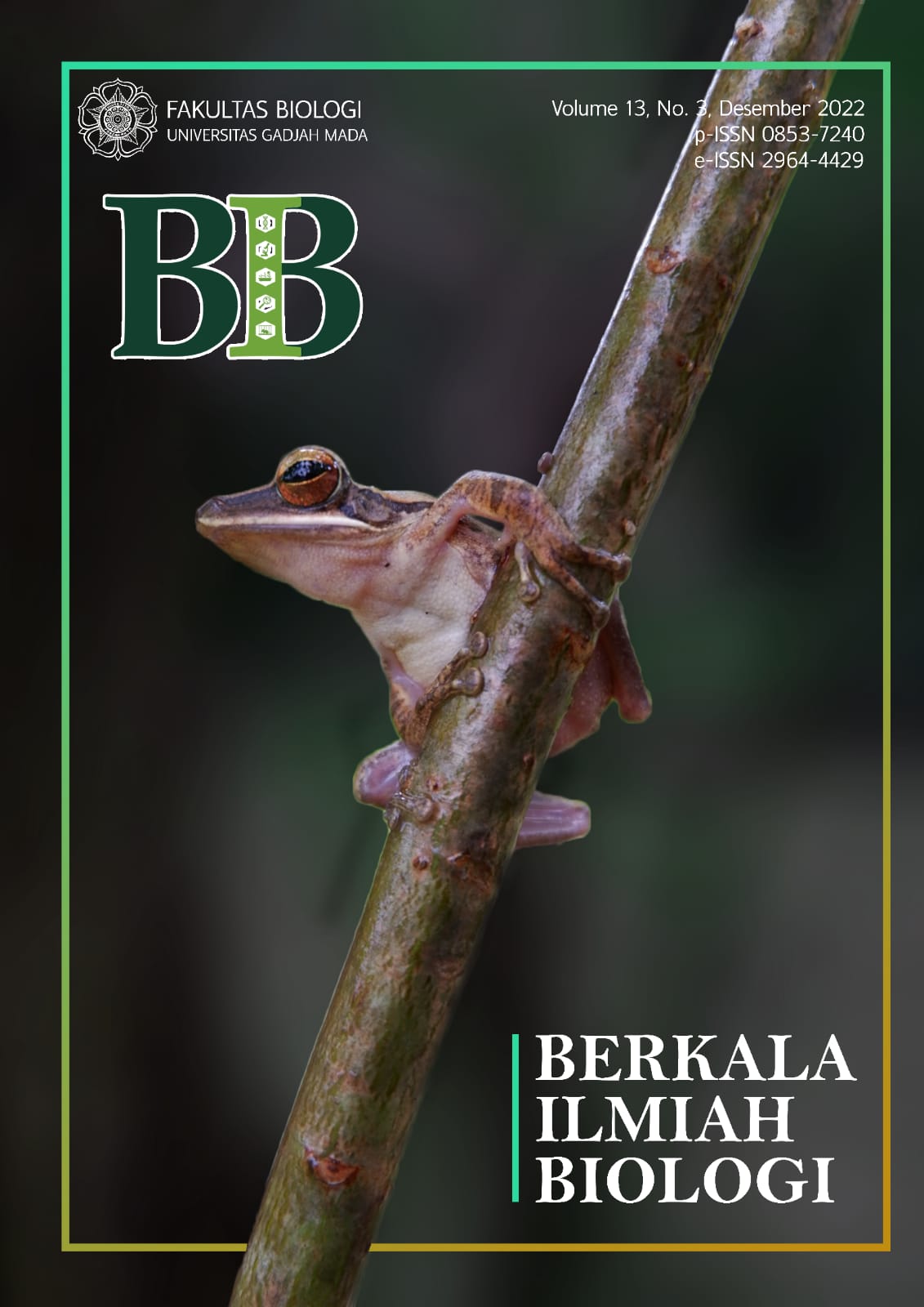Synergism of Turmeric, Moringa, Clove, and Red Betel Extracts with Bacillus thuringiensis var. kurstaki Berl. against Taro Caterpillar (Spodoptera litura Fab.) (Lepidoptera: Noctuidae) at the Laboratory Scale
Main Article Content
Abstract
Bacillus thuringiensis is known as a bioinsecticide for controlling taro caterpillar, Spodoptera litura Fab. in cabbage plants. However, Bt. is easily degraded by ultraviolet (UV), so it needs UV protectant. This research aimed to study the synergism of extract of turmeric, moringa, cloves, and red betel as UV protectants for Bt. and to measure the Bt. half lifes. As much as 25 (w/v) of turmeric, moringa, cloves, and red betel extracts was used to make Bt. suspension. The Bt. suspension then was exposed to sunlight for 0, 1, 3, 7, 14, 21, and 28 days then it was tested againts 25 individuals of 1st larval instar of taro caterpillar and each treatment was using three replicates. Pathogenicity of each formulation was observed by calculating larval mortality up to the 7th day after treatment. The results showed that the highest larval mortality was found in the Bt. formulation added extracts at 0-day exposure. Mortality data for each Bt. treatment. showed a decrease from the treatment of 0 to 28-day exposures. After 28 days of exposure, Bt. without extract addition had a pathogenicity of 15.2%, whereas Bt. with clove extract had pathogenicity about 56.4%, which is higher than those on turmeric, moringa, and red betel. The first half life of Bt. added with clove was 32.3 days, while the second half life was 50.7 days. Based on this research, it can be concluded that clove has synergism affect when applied with Bt.
Article Details

This work is licensed under a Creative Commons Attribution 4.0 International License.


